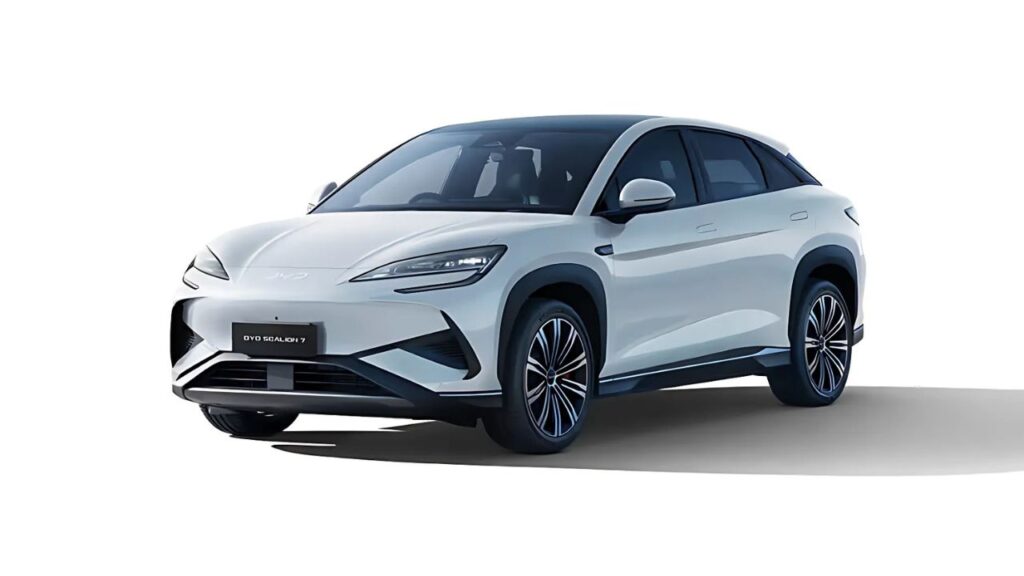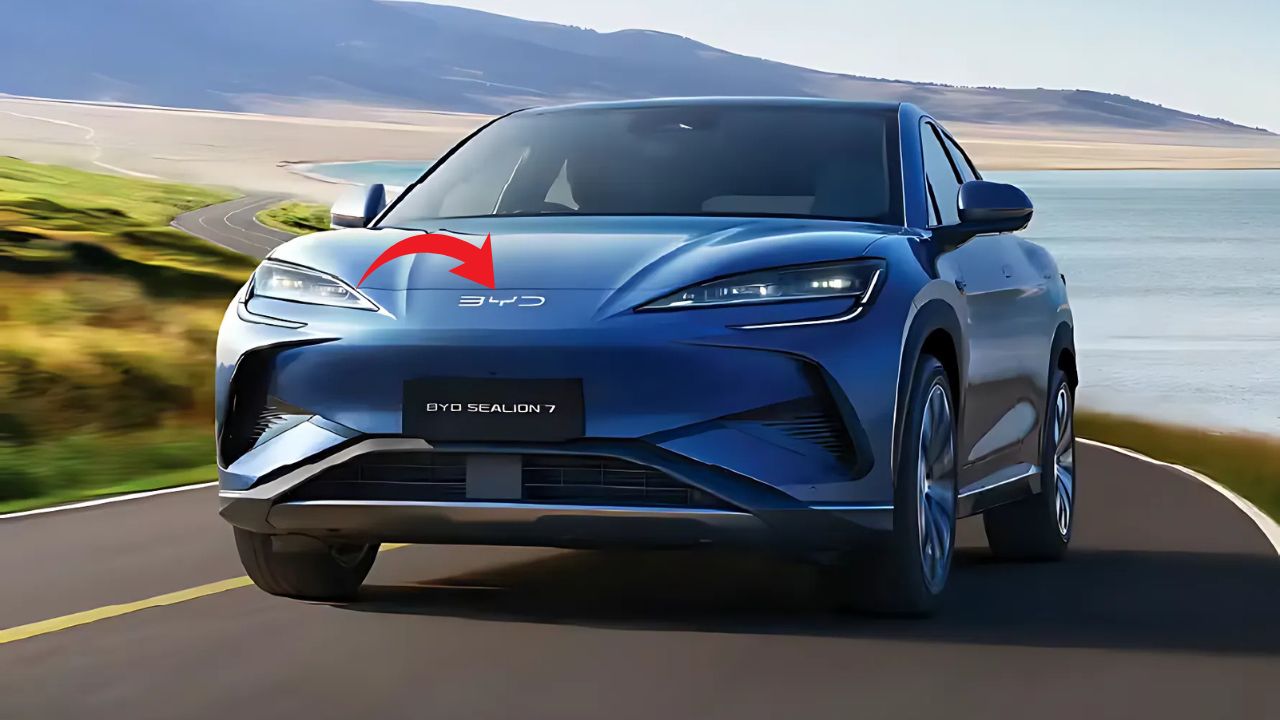BYD’s Unstoppable Rise: The Chinese Giant’s 2024 Australian Success Story
Hold onto your steering wheels, car enthusiasts! BYD‘s 2024 performance has been nothing short of spectacular, especially in Australia where the Chinese automotive powerhouse has completely rewritten the rules of the game. With the introduction of game-changing models like the Sealion 7 and the revolutionary Shark 6 ute, BYD has proven that electric and hybrid vehicles aren’t just the future – they’re dominating the present.
Let’s dive deep into how this 64.5% sales increase in Australia and the staggering 4.27 million global sales have positioned BYD as a serious contender against automotive giants like Tesla, Ford, and Honda.
The Numbers Don’t Lie: BYD’s Global Dominance
Picture this: BYD sold an absolutely mind-blowing 4.27 million new energy vehicles worldwide in 2024. That represents a massive 41.3% increase compared to 2023’s already impressive 3.02 million units. These aren’t just numbers on a spreadsheet – they represent a fundamental shift in how the world thinks about transportation.
Here’s what makes these figures even more impressive: BYD overtook both Ford and Honda in global vehicle sales, becoming the world’s sixth-largest automaker. The company’s success wasn’t limited to just battery electric vehicles either – their plug-in hybrid sales skyrocketed by 72.8%, reaching 2.48 million units.
Australia’s Love Affair with BYD: The Local Success Story
Down under, BYD’s success story reads like a perfectly executed business plan. Australian sales reached 20,458 units in 2024, marking a substantial 64.5% growth over the previous year. While they fell slightly short of their ambitious 25,000-unit target, the momentum speaks volumes about Australian consumers’ appetite for quality Chinese electric vehicles.
The Sealion 7 electric SUV emerged as a standout performer, with March 2025 seeing 573 registrations – a significant improvement from February’s 157 deliveries. Meanwhile, the Shark 6 plug-in hybrid ute has become Australia’s third most popular ute, capturing an impressive 15% market share in the 4×4 ute segment.
Sealion 7: Redefining the Electric SUV Market
The BYD Sealion 7 isn’t just another electric SUV – it’s a statement piece that directly challenges the Tesla Model Y’s dominance. Priced from $54,990 plus on-road costs for the Premium variant and $63,990 for the Performance model, it offers compelling value in the competitive mid-size SUV segment.
What sets the Sealion 7 apart? For starters, its 82.56kWh lithium-iron phosphate battery delivers an impressive 482km range (WLTP) for the Premium model. The Performance variant, with its 390kW/690Nm dual-motor setup, can sprint from 0-100km/h in just 4.5 seconds – putting many sports cars to shame.
EVDirect CEO David Smitherman predicts the Sealion 7 will become BYD’s third best-selling model in Australia, trailing only the dominant Shark 6 and the popular Sealion 6 SUV. With features like vehicle-to-load functionality, panoramic sunroof, and advanced driver assistance systems, it’s clear why Australian buyers are taking notice.
Shark 6: The Game-Changing Hybrid Ute
Let’s talk about the elephant in the room – or should we say, the shark in the ute market. The BYD Shark 6 has absolutely revolutionized Australia’s traditionally diesel-dominated ute segment. As Australia’s first plug-in hybrid ute, it landed with aggressive pricing of $57,900 plus on-road costs, immediately putting pressure on established players like Ford Ranger and Toyota HiLux.
The Shark 6’s success has been nothing short of phenomenal. In March 2025 alone, it achieved 2,810 registrations, representing 58% of BYD’s total sales for the month. These numbers pushed it to become the third most popular ute in Australia, behind only the Toyota HiLux and Ford Ranger.
Power Meets Efficiency: The Technical Marvel
Here’s where things get really exciting for gear heads. The Shark 6’s hybrid powertrain combines a 1.5-litre turbocharged four-cylinder engine with two electric motors – one on each axle. This setup delivers a combined 320kW/650Nm of power, enabling a blistering 0-100km/h time of just 5.7 seconds.
But raw power isn’t everything. The Shark 6’s 29.58kWh battery pack provides 100km of pure electric range and contributes to an overall 800km combined range. With fuel consumption as low as 2.0L/100km when regularly charged, it’s proving that you don’t have to choose between performance and efficiency.
Market Impact: Disrupting the Status Quo
The Shark 6’s impact on the Australian ute market cannot be overstated. Within its first month of sales, BYD secured over 4,000 orders, creating such demand that it temporarily crashed the company’s website. By February 2025, the Shark 6 had helped BYD achieve its highest monthly sales ever with 3,281 vehicles delivered – a 62% increase from their previous record.
Traditional ute buyers – primarily tradies and commercial users – are embracing the Shark 6’s vehicle-to-load capability, which allows them to power tools and equipment directly from the ute. This practical feature, combined with the 2,500kg towing capacity, makes it a genuine workhorse that happens to be environmentally friendly.
The Competition Response: Everyone’s Playing Catch-Up
BYD’s success hasn’t gone unnoticed by competitors. The Ford Ranger PHEV, originally scheduled to beat BYD to market, is now playing catch-up with a mid-2025 launch date. Meanwhile, GWM’s Cannon Alpha PHEV starts at a higher $62,990 price point, giving BYD a significant competitive advantage.
Tesla’s Australian market share has dropped to 42% in 2024, down from previous years, partly due to increased competition from brands like BYD. The Model Y’s 21,253 deliveries in 2024 represented a decline from 2023’s 28,709 units, highlighting how effectively BYD and other Chinese brands are disrupting the established order.
BYD’s Ambitious Australian Plans
EVDirect CEO David Smitherman isn’t resting on these laurels. The company aims to double its sales in 2025, targeting over 40,000 units across their expanding model range. New additions include a seven-seat SUV (likely the Tang), cheaper variants of existing models, and the premium Denza luxury sub-brand.
BYD’s 40,000th Australian sale celebration in March 2025 marked a significant milestone, but it’s just the beginning. With plans for additional models including a potential full-size Shark 7 or Shark 8 pickup truck and the rugged Bao 5 large 4×4 SUV, BYD is positioning itself for continued growth.
Technology Leadership: Beyond Just Sales Numbers

What truly sets BYD apart isn’t just their sales success – it’s their vertical integration and technological prowess. As the world’s second-largest battery supplier, BYD supplies power packs to competitors including Toyota, NIO, and even Tesla. Their Blade Battery technology offers enhanced safety and longevity compared to traditional lithium-ion batteries.
The company’s DM-i hybrid system in vehicles like the Sealion 6 and Shark 6 operates in “electric-first” mode, using the petrol engine primarily as a generator. This approach delivers exceptional fuel efficiency while maintaining the convenience of traditional refueling when needed.
Consumer Sentiment: Australian Buyers Embrace Change
Australian automotive culture has traditionally favored large, powerful vehicles, particularly utes and SUVs. BYD’s success proves that consumers are willing to embrace new technology when it delivers tangible benefits. The Shark 6’s ability to match or exceed the performance of traditional diesel utes while offering significantly lower running costs has won over skeptical buyers.
Kate Hornstein, Head of Marketing at EVDirect, notes that following recent launches, BYD achieved a 196% increase compared to March 2024, “surpassing category growth and reinforcing the strength of the brand and product strategy.”
Challenges and Opportunities
Despite impressive growth, BYD faces challenges in the Australian market. Electric vehicle adoption overall grew by just 4.6% in 2024, significantly slower than previous years’ explosive growth. However, hybrid sales surged 75%, suggesting Australian consumers are gravitating toward plug-in hybrids as a stepping stone to full electrification.
BYD’s strategy of offering both pure electric and plug-in hybrid options positions them perfectly to capture demand across different consumer segments. The upcoming cheaper Shark 6 Essential variant, expected around early 2026, could further democratize access to hybrid ute technology.
Frequently Asked Questions
Q: How much does the BYD Sealion 7 cost in Australia?
The BYD Sealion 7 starts from $54,990 plus on-road costs for the Premium variant, with the Performance model priced at $63,990.
Q: What’s the range of the BYD Shark 6?
The Shark 6 offers approximately 800km combined range, with 100km of pure electric range from its 29.58kWh battery.
Q: Is the BYD Shark 6 actually competitive with traditional utes?
Yes, the Shark 6 has become Australia’s third most popular ute with 15% market share in the 4×4 segment, proving its competitiveness.
Q: How fast can the BYD vehicles accelerate?
The Shark 6 accelerates 0-100km/h in 5.7 seconds, while the Sealion 7 Performance does it in 4.5 seconds.
Q: What’s BYD’s towing capacity?
The Shark 6 offers 2,500kg brake towing capacity, suitable for most recreational and light commercial needs.
Q: Are BYD vehicles reliable?
BYD offers comprehensive warranties including 8 years/160,000km for the battery and 6 years/150,000km for the vehicle.
Q: Can I charge BYD vehicles at home?
Yes, all BYD plug-in models can be charged using standard household outlets or dedicated EV charging stations.
Q: What’s coming next from BYD Australia?
BYD plans to introduce seven-seat SUVs, cheaper model variants, and the premium Denza luxury brand in 2025-2026.

